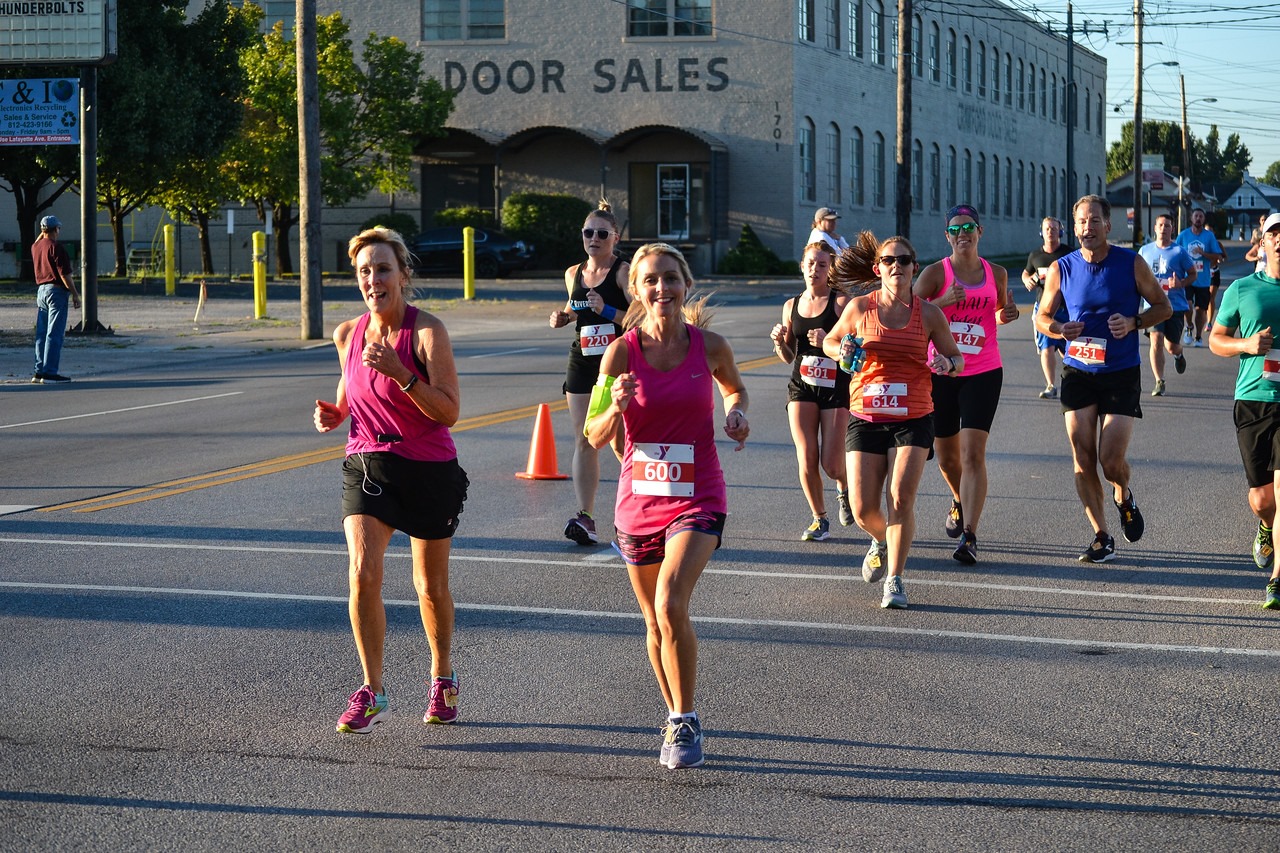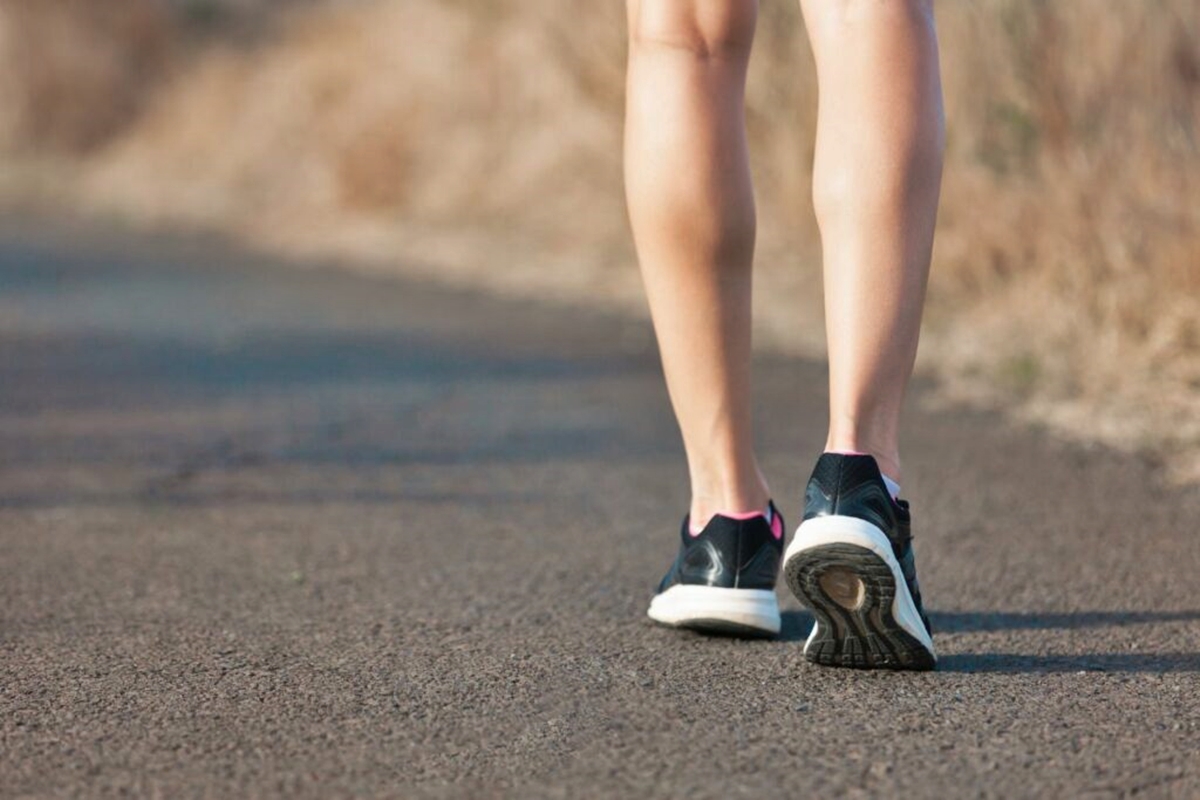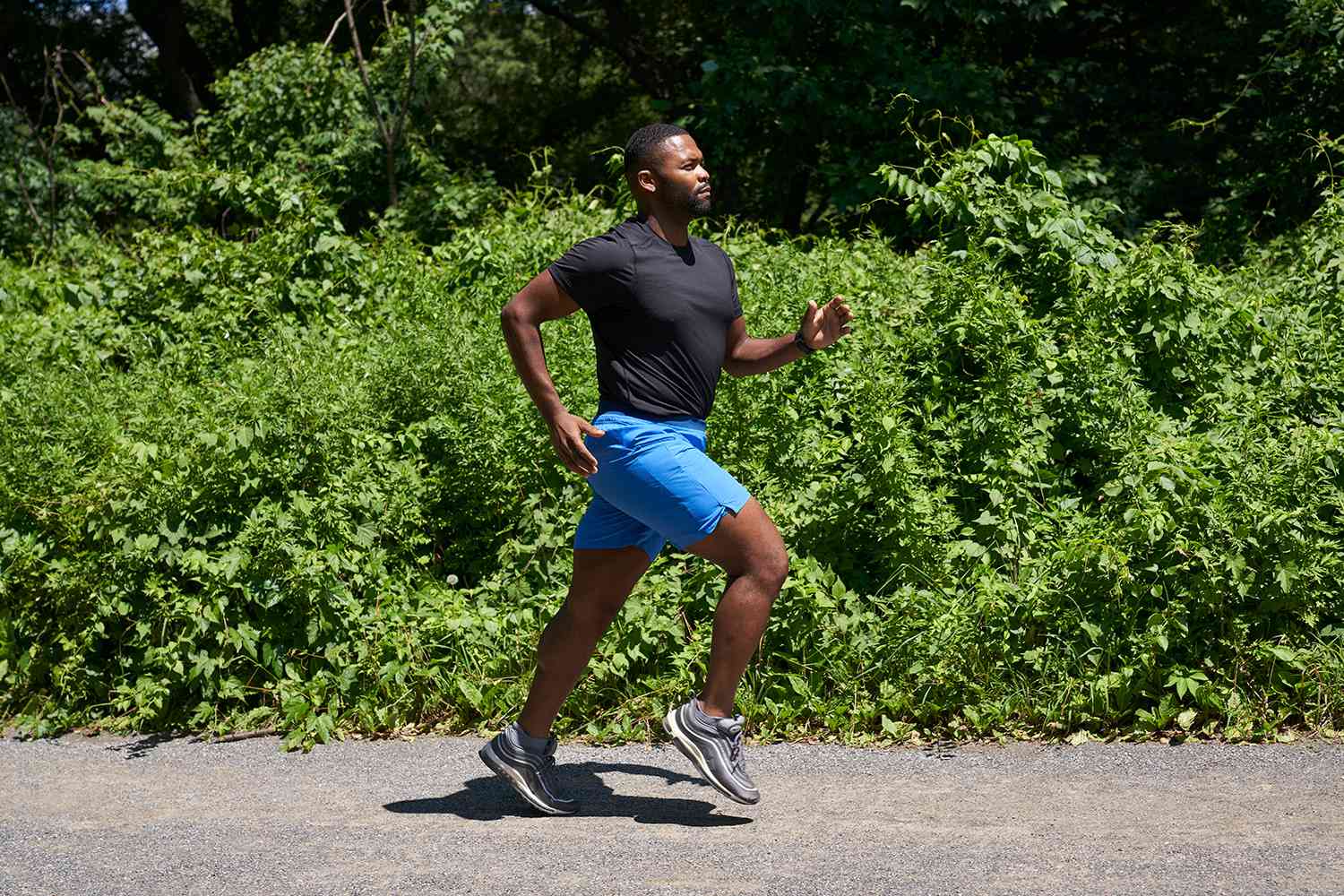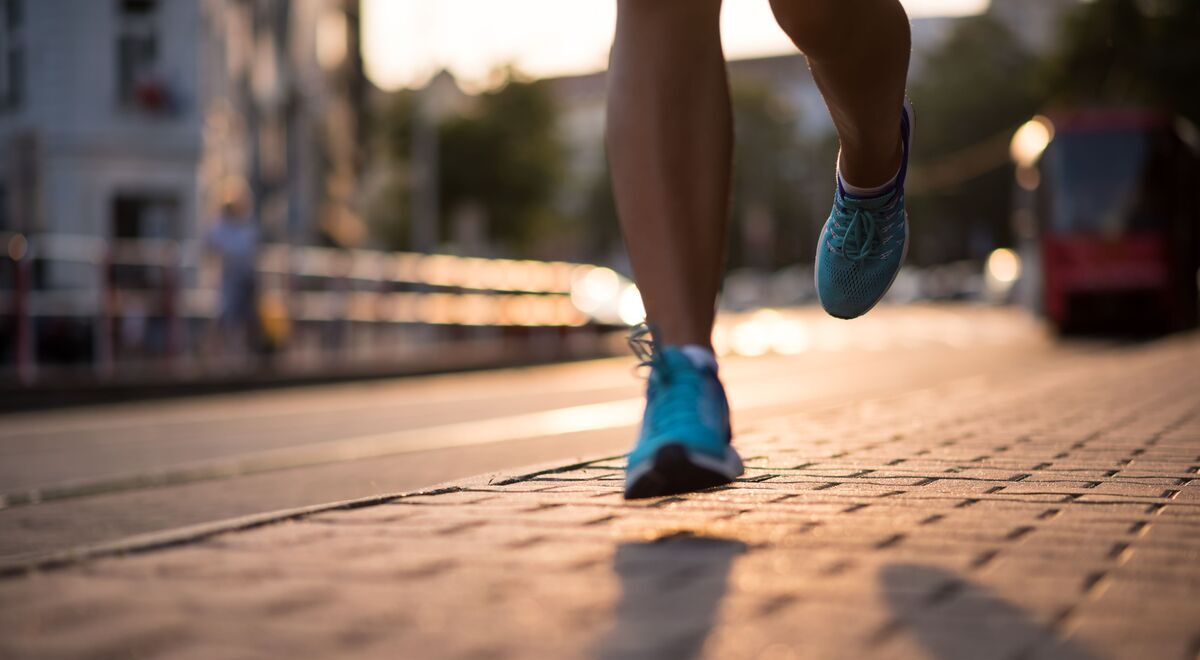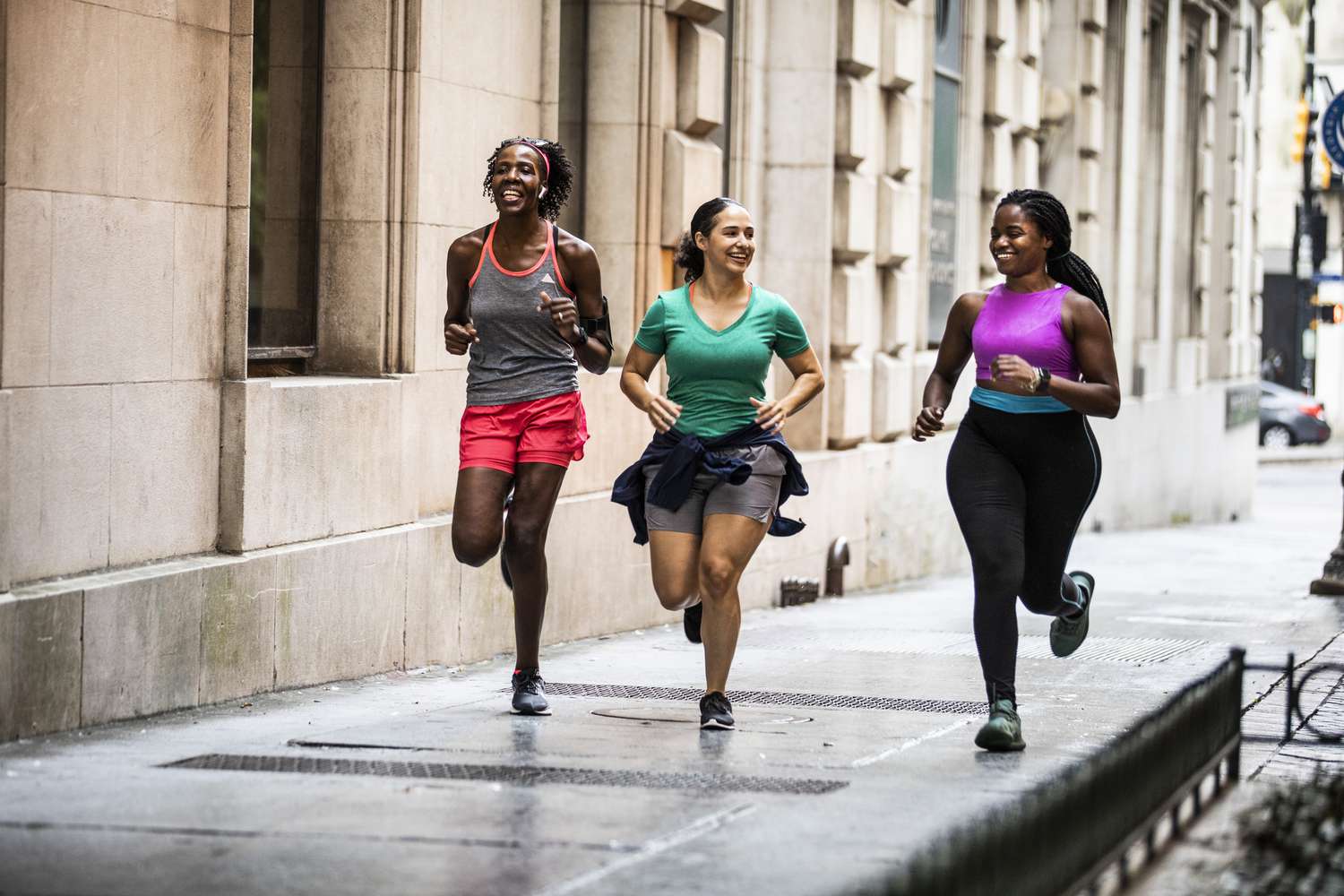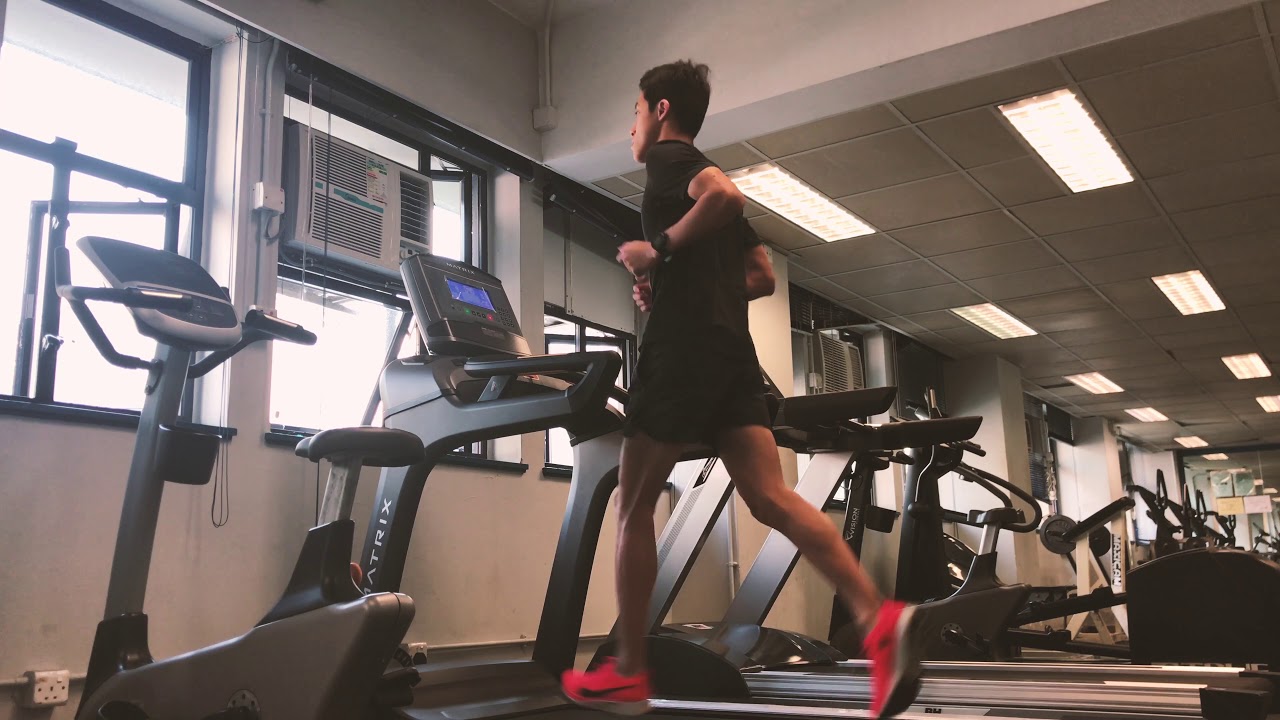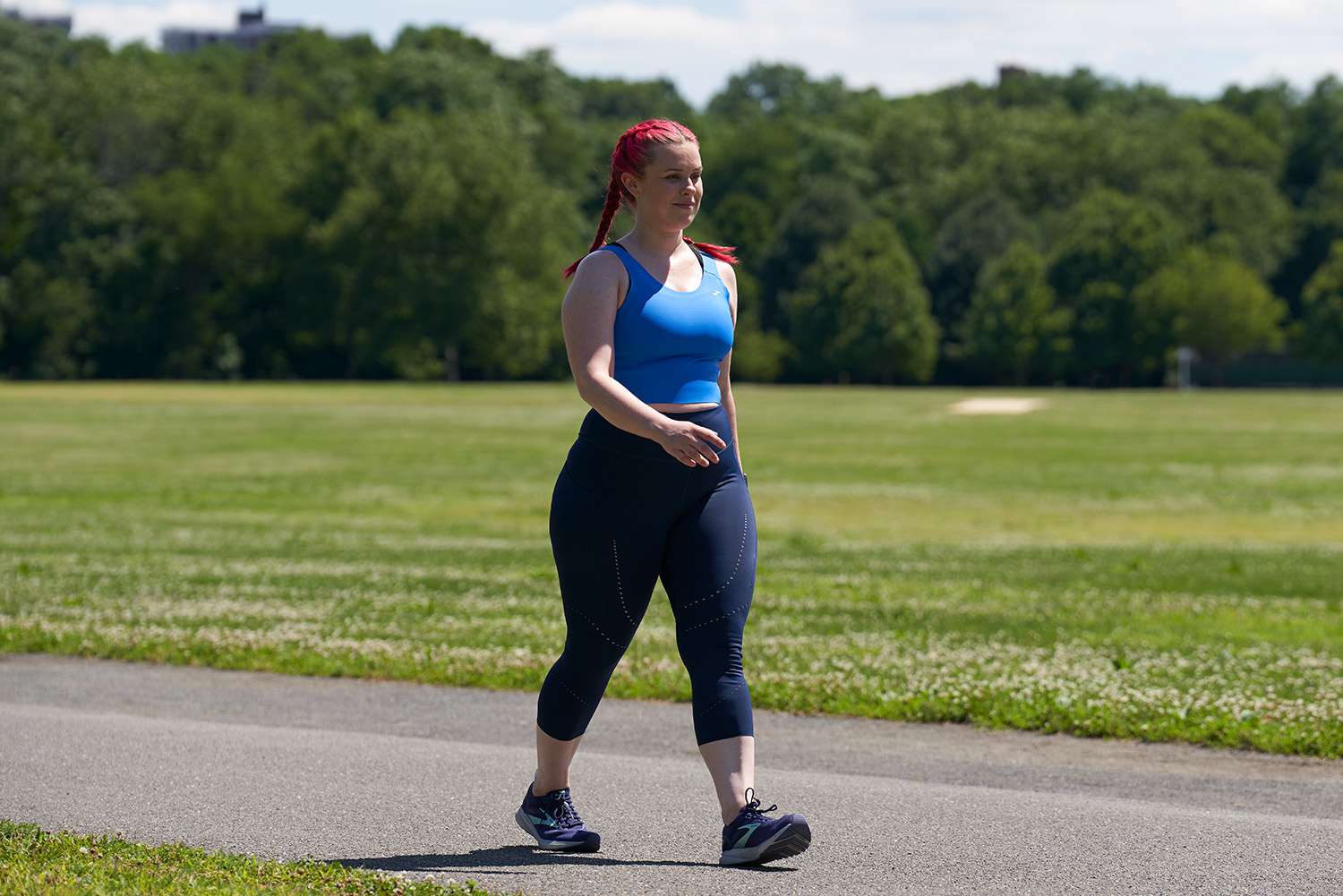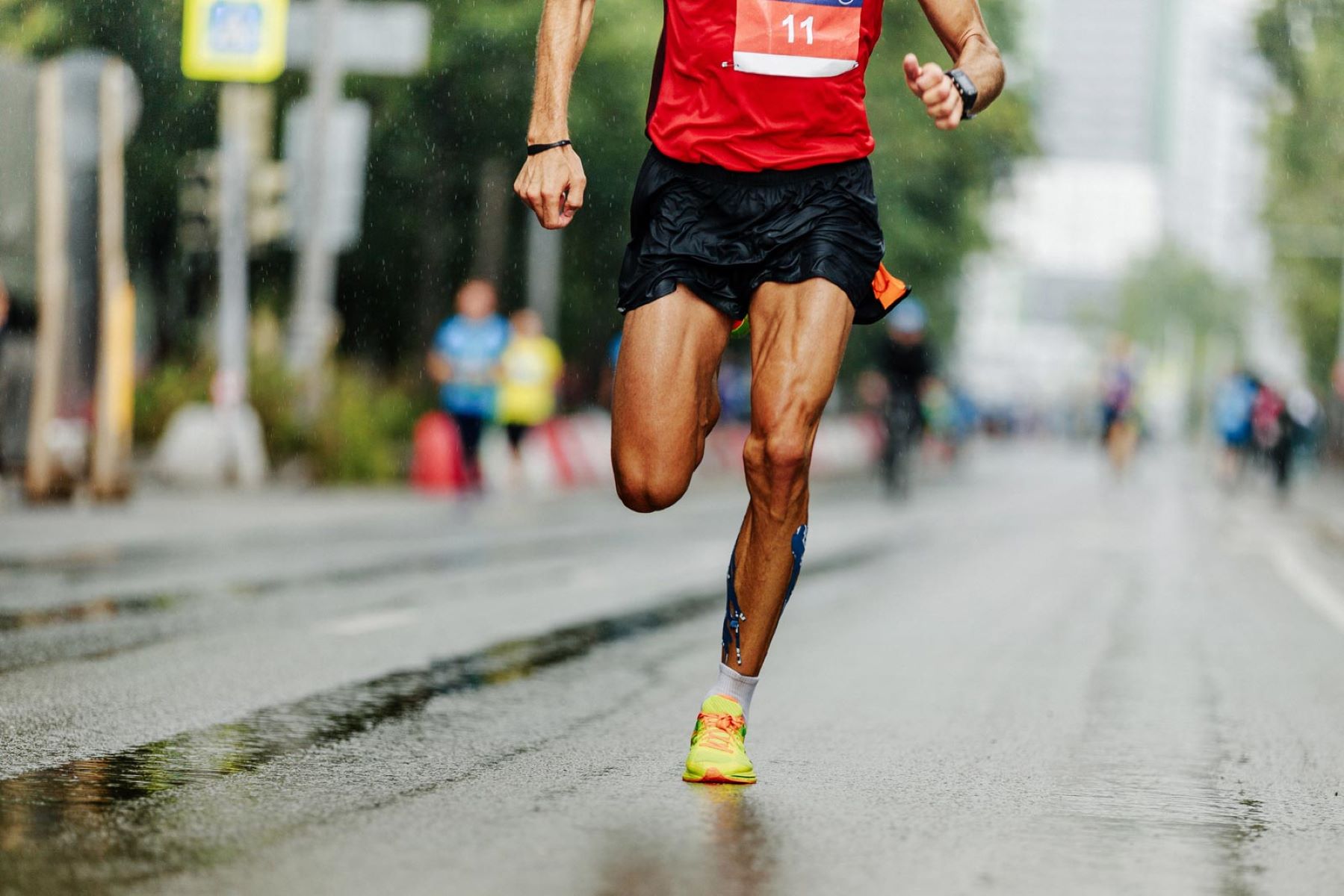Home>Misc>Featured>How Poor Form Can Use Too Much Of Your Energy During Long-Distance Running
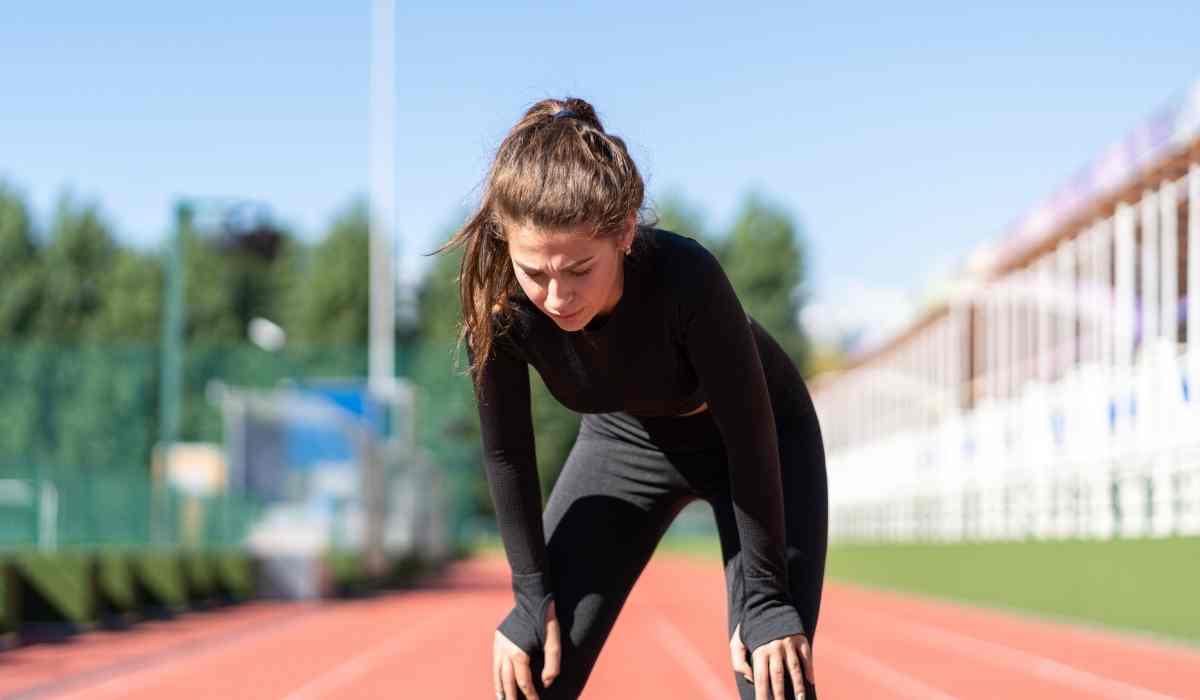

Featured
How Poor Form Can Use Too Much Of Your Energy During Long-Distance Running
Modified: January 2, 2024
Improve your long-distance running efficiency and conserve energy by avoiding poor form. Learn how poor form can waste your energy and how to fix it. Featured in this article.
Introduction
Long-distance running is a popular form of exercise and endurance sport that requires both physical fitness and mental stamina. When embarking on long-distance runs, it’s important to maximize energy efficiency to maintain endurance throughout the journey. One aspect that often gets overlooked is running form and its impact on energy expenditure.
Poor form can lead to wasteful energy consumption, hindering performance and causing premature fatigue. Understanding how form influences energy usage can help runners optimize their technique and conserve energy for longer, more efficient runs.
In this article, we’ll explore the common form mistakes that runners make during long-distance running and how they affect energy expenditure. From excessive arm movements to overstriding and improper foot strike patterns, each aspect will be examined in detail. Additionally, we’ll discuss the importance of maintaining proper posture and adopting effective breathing techniques to enhance energy efficiency.
Finally, we’ll provide some practical tips to help improve running form and reduce energy consumption during long-distance running. By implementing these strategies, runners can enhance their performance, increase their endurance, and fully enjoy the benefits of this rewarding sport.
Understanding the Impact of Poor Form on Energy Expenditure
When it comes to long-distance running, every movement you make requires energy. Therefore, it’s crucial to understand how poor running form can impact energy expenditure and ultimately hinder your performance on those lengthy runs. By addressing and correcting these form issues, you can significantly conserve energy and optimize your running efficiency.
One of the main ways that poor form affects energy expenditure is through excessive arm movement. While it’s natural for your arms to move while running, excessive swinging or flailing can waste valuable energy. This unnecessary movement puts strain on your upper body and diverts energy that could otherwise be used to power your legs and maintain a steady pace.
Another common form mistake is overstriding, which refers to extending your leg too far in front of your body with each step. Overstriding puts additional stress on your joints and muscles and can lead to a braking effect that slows you down. It also requires more energy to propel yourself forward, as you’re essentially “reaching” for each stride instead of running efficiently with your center of gravity aligned correctly.
Foot strike patterns also play a significant role in energy expenditure. A heel-striking pattern, where your heel contacts the ground first, can lead to increased impact forces and higher energy requirements. On the other hand, a midfoot or forefoot strike allows for a more efficient transfer of energy, reducing the strain on your body and conserving valuable energy.
Proper posture is another crucial factor in energy usage during running. If you slouch or lean too far forward, it disrupts your body’s alignment and increases the strain on your muscles. Maintaining an upright posture with a slight lean forward from the ankles can help reduce energy waste and optimize running efficiency.
Breathing techniques also influence energy expenditure. Shallow and irregular breathing can limit oxygen intake, leading to quicker depletion of energy. Learning to breathe deeply and rhythmically, syncing your breath with your strides, can help improve oxygenation and energy utilization.
By understanding these dynamics and how form affects energy expenditure, you can make conscious adjustments to optimize your running efficiency. In the following sections, we’ll dive deeper into each form mistake and discuss practical tips to improve your form and conserve energy during long-distance running.
Common Form Mistakes During Long-Distance Running
Long-distance running can be physically demanding, and it’s important to be aware of common form mistakes that can hinder your performance and drain your energy. By recognizing and addressing these form issues, you can improve your running efficiency and conserve energy, allowing you to go the distance with less effort.
One prevalent form mistake is excessive arm movement. While it’s natural for your arms to swing as you run, exaggerated arm movements can cause unnecessary energy wastage. Imagine pumping your arms wildly or crossing them in front of your body. These movements not only increase energy expenditure but also disrupt your balance and overall running rhythm.
Another form mistake that many runners make is overstriding. Overstriding occurs when you extend your leg too far in front of your body with each stride. This action puts unnecessary stress on your joints and muscles, requiring more effort to move forward. It’s like putting on the brakes with every step. Instead, focus on maintaining a cadence where your feet land closer to your body’s center of gravity.
Foot strike patterns can also impact energy consumption. Heel striking, where your heel contacts the ground first, is a common mistake that can lead to increased impact forces and energy loss. Instead, aim for a midfoot or forefoot strike, where the impact is better distributed and the transfer of energy is more efficient. This also reduces the risk of injuries associated with excessive impact.
Form mistakes aren’t just limited to the lower body. Posture plays a crucial role in energy usage during long-distance running. Slouching or leaning too far forward can strain your muscles and waste valuable energy. Maintain an upright posture with your shoulders back and relax your upper body, allowing for efficient movement and optimal energy conservation.
Lastly, breathing techniques can impact energy expenditure. Shallow and irregular breathing limits oxygen intake, which is essential for energy production. Focus on deep, diaphragmatic breathing while running. Inhale deeply through your nose and exhale fully through your mouth, syncing your breath with your strides. This rhythmic breathing pattern enhances oxygenation and helps you sustain energy levels over longer distances.
By being mindful of these common form mistakes and actively working to correct them, you can enhance your running efficiency and conserve energy. In the next section, we’ll discuss specific tips and exercises to help you improve your running form and optimize energy utilization during long-distance runs.
Excessive Arm Movement and Energy Consumption
When it comes to long-distance running, every movement you make requires energy. One form mistake that can significantly impact energy expenditure is excessive arm movement. Though it’s natural for your arms to move while running, excessive swinging or flailing can waste valuable energy and hinder your overall performance.
Excessive arm movement can put strain on your upper body and divert energy that could be better used to power your legs and maintain a steady pace. Imagine the energy wasted when your arms are pumping wildly, crossing each other in front of your body, or flailing out to the sides. These movements not only increase energy expenditure but also disrupt your balance and running rhythm.
To reduce excessive arm movement and conserve energy, it’s important to focus on proper arm positioning and motion. Keep your elbows bent at about a 90-degree angle and close to your body. Avoid tightly clenching your fists, as this can add tension to your arms and waste additional energy.
Your arm swing should be natural and coordinated with your leg movements. As your right leg moves forward, your left arm should swing forward and vice versa. The arm swing should be controlled and efficient, minimizing unnecessary movement. Imagine your arms acting as pendulums, swinging forward and back in a smooth and relaxed manner.
Another technique to reduce arm movement and energy expenditure is to engage your core muscles. A strong core acts as a stable anchor for your arms, allowing for more efficient arm swing and overall body movement. Prioritize core exercises in your training routine to strengthen this crucial area.
Practicing arm drills and exercises can also help improve arm efficiency and reduce wasted energy. Incorporate exercises such as arm swings, arm circles, and arm drive drills into your warm-up routine to promote proper arm motion and coordination.
Remember, the goal is not to completely eliminate arm movement, but rather to minimize excessive and wasteful actions. By focusing on proper arm positioning, coordination, and engaging your core muscles, you can greatly improve your running efficiency and conserve energy for those long-distance runs.
In the next section, we’ll explore the effects of overstriding on energy efficiency and provide tips on how to correct this common form mistake.
The Effects of Overstriding on Energy Efficiency
Overstriding is a common form mistake that can have a significant impact on energy efficiency during long-distance running. In simple terms, overstriding occurs when you extend your leg too far in front of your body with each stride. This form issue not only wastes energy but also slows you down and puts unnecessary stress on your joints and muscles.
When you overstride, you essentially create a braking effect with each step. Your foot lands too far ahead of your center of gravity, causing your body to decelerate more than necessary. This constant braking motion not only increases energy expenditure but also puts strain on your knees, hips, and other lower extremity joints.
By overstriding, you are essentially “reaching” for each stride instead of running efficiently with your body’s momentum. This requires more effort to propel yourself forward, leading to greater energy consumption and decreased overall efficiency.
Overstriding also disrupts your natural running rhythm and cadence. Instead of maintaining a smooth and fluid motion, each stride becomes an abrupt and inefficient movement. This can lead to muscle imbalances and a higher risk of injuries, as certain muscles are overworked while others are underutilized.
To correct overstriding and improve energy efficiency, it’s important to focus on increasing your cadence or stride turnover rate. Aim for a cadence of around 180 steps per minute or higher. This higher cadence reduces the likelihood of overstriding as your foot spends less time on the ground, allowing for a quicker turnover and a more efficient running motion.
Another technique to help correct overstriding is to focus on landing your feet closer to your body’s center of gravity. Visualize this by imagining a straight line from your hip to your foot. Try to make contact with the ground beneath or slightly behind your body, rather than reaching out in front of you. This adjustment allows you to harness your body’s forward momentum and reduces the braking effect associated with overstriding.
Engaging in strength and flexibility exercises, particularly those that target the lower body and core muscles, can also help correct overstriding. Strengthening your hip, glute, and hamstring muscles will provide better support and stability, allowing for a more efficient running stride.
By correcting overstriding and focusing on a higher cadence, landing closer to your body’s center of gravity, and improving strength and flexibility, you can significantly improve your energy efficiency during long-distance running. In the next section, we’ll discuss different foot strike patterns and their impact on energy expenditure.
Foot Strike Patterns and Energy Expenditure
When it comes to running, the way your foot strikes the ground can have a significant impact on energy expenditure. Different foot strike patterns can influence how efficiently you move forward and how much energy your body consumes during long-distance running.
One common foot strike pattern is heel striking, where your heel contacts the ground first with each stride. Heel striking often results in a heavy impact and greater energy consumption. With each step, the force is directed primarily through your heel, causing increased stress on your joints and muscles.
An alternative to heel striking is a midfoot or forefoot strike. In this pattern, the impact is distributed across your midfoot or forefoot, allowing for better shock absorption and energy transfer. This reduces the strain on your joints and muscles, resulting in improved energy efficiency.
Studies have suggested that midfoot or forefoot striking may also be associated with a shorter “braking” period, which occurs when your foot makes contact with the ground. By reducing this braking effect, you can maintain a smoother and more continuous motion, allowing for better energy conservation.
Transitioning to a midfoot or forefoot strike pattern may require some adjustment and practice. Start by focusing on landing with your foot beneath or slightly behind your body’s center of gravity to promote a more forward propulsion. Be mindful of your body alignment and engage your core for balance and stability.
It’s essential to note that foot strike patterns can vary among runners, and what works for one person may not work for another. Factors such as foot anatomy, running speed, and terrain can influence the most natural and efficient foot strike pattern for you.
Regardless of your foot strike pattern, maintaining good overall running form is crucial. This includes keeping a slight forward lean from the ankles, allowing your body to move more naturally and efficiently. Adopting a more upright posture, lifting your knees, and aligning your stride with your body’s center can help optimize energy utilization.
Remember, a gradual transition to a new foot strike pattern is important to prevent potential injuries. Start by incorporating short intervals of midfoot or forefoot striking during your runs, gradually increasing the duration and intensity over time.
By paying attention to your foot strike pattern and making adjustments if necessary, you can enhance your energy efficiency during long-distance running. In the next section, we’ll explore the role of maintaining proper posture in conserving energy.
Maintaining Proper Posture and Its Influence on Energy Usage
Proper posture plays a crucial role in energy usage during long-distance running. When you maintain good posture, your body is in optimal alignment, allowing for more efficient movement and energy conservation. On the other hand, poor posture can lead to inefficient running mechanics and unnecessary energy expenditure.
One aspect of maintaining proper posture is to ensure an upright position. Imagine a string pulling you up from the top of your head. Your head should be aligned with your spine, shoulders should be relaxed and back, and your chest should be open. By keeping your upper body aligned, you allow for optimal lung capacity, better oxygen intake, and improved energy utilization.
Another critical aspect of posture is leaning slightly forward from your ankles. This forward lean helps you align your body’s center of gravity with the direction of your movement. It allows you to use your forward momentum more efficiently and reduce the energy wasted on unnecessary vertical movements.
When your posture is compromised and you slouch or lean too far forward or backward, it disrupts your body’s alignment and causes inefficient movement. Poor posture puts strain on your muscles, particularly in the neck, shoulders, and lower back, leading to increased energy consumption and premature fatigue.
To maintain proper posture during long-distance running, it’s essential to engage your core muscles. A strong core provides stability and supports your spine, allowing for better posture throughout your run. Incorporate exercises that target your core, such as planks and Russian twists, into your training routine to improve core strength.
Developing body awareness is also key to maintaining proper posture. Stay mindful of your body’s alignment as you run, regularly checking in with your posture, especially during moments of fatigue. Regular practice and conscious effort can help you develop a natural and efficient running posture.
Remember that maintaining proper posture is not just about energy efficiency; it also helps prevent injuries. By minimizing undue stress on your joints and muscles, you reduce the risk of overuse injuries and maintain a healthier running practice in the long term.
By paying attention to your posture and making it a priority, you can significantly improve your energy usage during long-distance running. In the next section, we’ll dive into the importance of breathing techniques and how they influence energy efficiency.
Breathing Techniques and their Impact on Energy Efficiency
Breathing plays a fundamental role in fueling our bodies with oxygen, and when it comes to long-distance running, effective breathing techniques can have a significant impact on energy efficiency. Proper breathing ensures that your muscles are adequately oxygenated, allowing them to perform optimally and reducing unnecessary energy expenditure.
One common mistake many runners make is shallow and irregular breathing. Taking quick, shallow breaths limits the amount of oxygen you can intake and decreases the efficiency of energy production. This can lead to early fatigue and decreased performance levels.
Aim for deep diaphragmatic breathing while running. Inhale deeply through your nose, expanding your belly as you fill your lungs, and exhale fully through your mouth. This technique allows for a larger volume of oxygen to enter your lungs and be transported to your muscles, improving energy utilization.
Syncing your breathing with your strides can also enhance energy efficiency. One popular approach is the 2:2 breathing pattern, where you take two inhales and two exhales for each step, creating a rhythmic and efficient breathing cycle. For example, you can inhale for two steps and exhale for two steps. Experiment with different patterns to find the one that works best for you.
Proper breathing techniques also extend to breathing rhythm and cadence. Just as matching your foot strikes to a consistent rhythm can improve running efficiency, syncing your breath to your strides can have a similar effect. This synchronization helps you maintain a steady pace and optimize energy utilization.
During intense parts of your run, it’s common to experience breathlessness and the temptation to gasp for air. Instead, focus on maintaining a controlled and rhythmic breathing pattern. It’s essential to find the right balance between inhaling deeply enough to get sufficient oxygen and avoiding hyperventilation.
Practicing specific breathing exercises, both during your runs and in your training routine, can help improve your breathing efficiency over time. Deep breathing exercises, such as belly breathing and pursed-lip breathing, can help strengthen your diaphragm and improve your lung capacity.
Remember to stay relaxed while breathing, as tension in your upper body can inhibit natural and efficient breathing. Keep your shoulders relaxed and your upper body loose, allowing for unrestricted airflow.
By adopting proper breathing techniques and syncing your breath with your strides, you can optimize oxygen intake and energy utilization during long-distance running. In the next section, we’ll provide practical tips to help you improve your running form and conserve energy during your runs.
Tips for Improving Running Form and Conserving Energy
Improving your running form is essential for conserving energy and optimizing performance during long-distance runs. By making conscious adjustments to your technique and incorporating these tips into your training, you can enhance your running efficiency and enjoy more productive and enjoyable runs.
1. Focus on your posture: Maintain an upright posture with a slight forward lean from the ankles. This alignment allows for better energy transfer and reduces wasted vertical movement.
2. Engage your core: Strengthen your core muscles to provide stability and support. A strong core helps maintain proper posture and efficient movement throughout your run.
3. Check your arm swing: Keep your arms relaxed and your elbows at a 90-degree angle. Avoid excessive arm movement that can waste energy and disrupt your balance.
4. Strive for a higher cadence: Aim for a cadence of around 180 steps per minute or higher. Increasing your stride turnover helps reduce the likelihood of overstriding and improves energy efficiency.
5. Land with a midfoot or forefoot strike: Focus on landing with your foot beneath or slightly behind your body’s center of gravity. This promotes a more efficient transfer of energy and reduces joint stress.
6. Practice proper breathing techniques: Breathe deeply and rhythmically, syncing your breath with your strides. This ensures sufficient oxygen intake and supports energy production.
7. Gradually transition to new techniques: Making abrupt changes to your running form can lead to injuries. Instead, gradually incorporate adjustments into your training, allowing your body to adapt over time.
8. Incorporate strength and flexibility exercises: Strengthening your muscles and improving flexibility can enhance running mechanics and reduce the risk of injuries. Focus on exercises that target your lower body, core, and hip muscles.
9. Listen to your body: Pay attention to any discomfort or pain while running, as it may indicate areas of weakness or imbalances. Address these issues promptly to optimize your form and prevent injuries.
10. Get professional guidance: Consider working with a running coach or physiotherapist who can provide personalized feedback and guidance on improving your running form and conserving energy.
Remember, it takes time and practice to make significant improvements to your running form. Be patient with yourself and focus on gradual progress. Consistency and attention to detail will help you develop efficient running habits and maximize your energy utilization on long-distance runs.
Conclusion
Improving your running form and optimizing energy efficiency during long-distance running is a journey that requires patience, practice, and attention to detail. By addressing common form mistakes, such as excessive arm movement and overstriding, and focusing on proper posture, foot strike patterns, and breathing techniques, you can conserve energy and enhance your overall performance.
Remember to listen to your body, gradually incorporate changes to your running technique, and prioritize strength and flexibility exercises to support optimal running mechanics. Engaging your core, syncing your breath with your strides, and maintaining good overall posture are vital for efficient energy utilization.
Developing and maintaining proper running form isn’t just about conserving energy; it’s also about reducing the risk of injuries and ensuring a more enjoyable running experience. By implementing these tips into your training routine and staying mindful of your form, you can enhance your endurance, increase your running efficiency, and achieve your long-distance running goals.
So lace up your shoes, hit the trails, and embrace the journey of improving your running form. With determination, practice, and a focus on energy conservation, you’ll find yourself crossing that finish line with greater ease and satisfaction.
